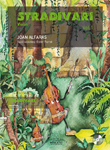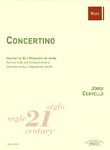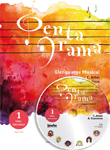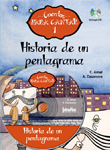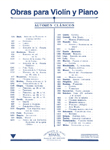WORKS
- Genre
-
Musical education
- Choir
- Counterpoint
- Dictation
- Direction
- Exam study manuals
- General music pedagogy
- Harmony
- Hearing
- Illustrations / Posters
- Improvisation / Sight reading
- Instrument methods
- Instrument pedagogy
- Instrumental study repertoire
- Instrumentation and orquestration
- Musical language
- Solfège
- Templates
- Theory and analysis
-
Incidental music
-
Lined paper
-
Flamenco
-
Religious music
-
Classical / contemporary
-
Modern music
-
Folk music / traditional
-
Musicology
-
Divulgation
-
Games and hobbies
-
Music therapy
-
Children / Youth
-
- Instruments
- Ensemble
- Difficulty level
- Period
- Genre
SOPORTE
Search
Find here: books, scores, composers, digital pieces, cd's
Best-selling works
Our classics

Newsletter
I wish to be informed of the news about your music
We have received your e-mail correctly
Multimedia
Sonata da Concerto Trompeta y Piano, op.52
Trompeta y Piano
BROTONS, SalvadorBROTONS, SalvadorBROTONS, SalvadorReg.: B.3218
20,00 €
P.V.P. (VAT included 4%)
Add to cart
- Ensemble: Duos: With piano.
- Genres: Classical / contemporary: Chamber.
- Product format: Partitura + particellas
- Difficulty level: Intermediate-advanced
- Period: 2nd half S. XX - XXI
- Publishing house: Editorial Boileau
- Collection: Siglo XX
- No. of pages: 32+8
- Measure: 31,00 x 23,00 cm
- Lenght: 15'00"
- ISBN: 978-84-8020-281-7
- ISMN: 979-0-3503-2011-8
- Available in digital: No
- Available for rent: No
The Sonata da Concerto for trumpet and piano or band, was composed in the Fall of 1990 for Britt Theurer commissioned by the University of Wyoming.
Formerly, the composer’s intention was to write a one movement piece for trumpet and piano, but as the piece grew, he felt the need to make the work available to a symphonic band, converting then the former sonata to a sort of concerto.
The piece is conceived in three parts: «Allegro-Lento-Allegro», preceded by a short slow introduction. The second «Allegro» is a developed and modified recapitulation of the first one with the inclusion of elements from the middle art. The soloist cadenza is located at the end of the slow section, and the culminating point of the piece is achieved towards the end, when the slow theme is fully restarted and the soloist plays a significant countermelody.
I. Allegro
II. Lento
III. Allegro

